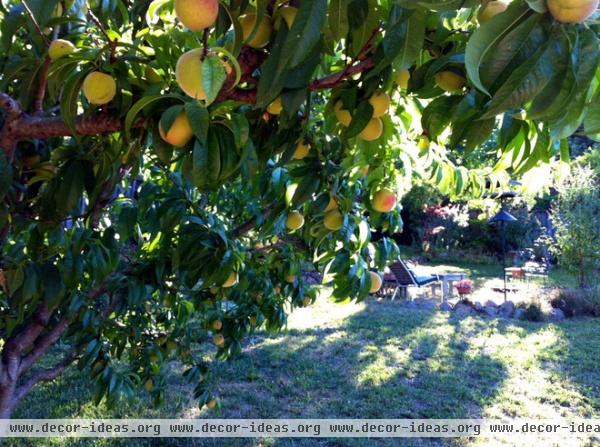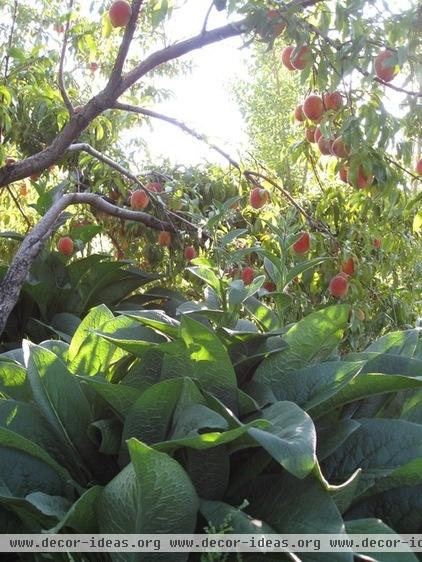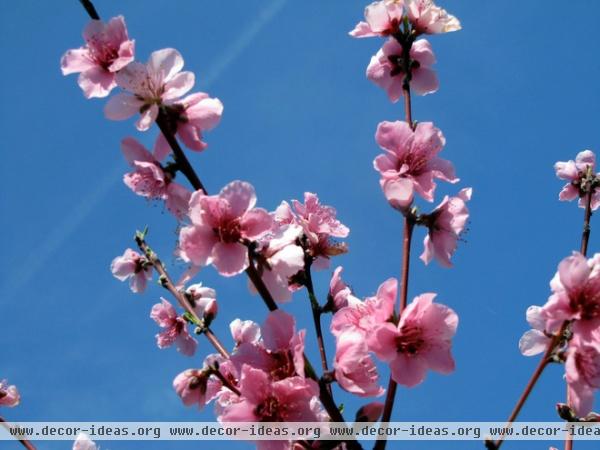How to Grow Your Own Peaches and Nectarines
Peaches are fuzzy and nectarines are smooth. For most people, that’s the only difference. And as nectarines are actually a variety of peach, fuzz or lack of it is a good way to tell them apart. This also means that if you can grow peaches, you can grow nectarines.
Of course, that doesn’t mean that once you’ve decided to grow peaches, nectarines or both, your decision making is over, especially given the wide variety of peaches and nectarines available. It’s not just a question of if you want a fruit with white or yellow flesh. Do you want an early, midseason or late harvest? How about a cling variety, the best choice for canning, or an easy-to-eat freestone? What about the semifreestone? Perhaps you want something really unusual, like a peach that isn’t even round.
And if that isn’t enough, you have the choice of having a standard tree, pruning a standard tree to a height that makes for easier picking or growing a true dwarf, some of which are even small enough for a very large container.
But don’t worry, whatever you choose, the end result will be delicious, tree-ripened fruit that can’t be beat for taste and juiciness.

Where to grow: Peaches and nectarines are fairly fussy. They like winter chill but not long freezes or late-winter frosts. They also prefer it hot and at least somewhat dry in summer. It’s no wonder that California has great peach-growing areas, though peaches can be found growing throughout the U.S. in USDA zones 5 through 8 or 9.
Favorite peaches: Arctic Supreme, Bonanza II, Early Elberta (Lemon Elberta, Improved Elberta), Earligrande, Elberta, El Dorado, Frost, Gleason, Harken, Indian Blood Cling (Indian Cling), Indian Free, June Pride, Loring, Nectar, O’Henry, Pix Zee, Redhaven, Redskin, Reliance, Snow Beauty, Strawberry Free, Suncrest, Tropic Snow, Vulcan, White Lady
Favorite nectarines: Arctic Fantasy, Arctic Glo, Arctic Jay, Arctic Rose, Arctic Sun, Fantasia, Goldmine, Harko, Juneglo, Mericrest, Nectar Babe, Nectar Zee, Panamint, Snow Queen, Southern Bell

Planting guidelines: Choose a spot in full sun with well-drained soil; amend if your soil is heavy or too sandy. Bare-root trees are the most common and should be planted in late winter or early spring once the ground is workable and the frosts are over. Container plants can be planted from fall through spring.
Care requirements: Fertilize a week after planting with a complete fertilizer, then fertilize heavily with a complete organic fertilizer every spring. Provide added nitrogen if needed.
Water deeply and regularly. Adding mulch around the tree (but not touching the trunk) will help preserve moisture while keeping the ground soft so falling fruit doesn’t get bruised.
Most peaches and nectarines will naturally drop fruit in early summer, but you’ll have to supplement that natural thinning with more rigorous thinning on your own to space out fruits and keep branches from becoming overloaded and breaking.
Leave 3 to 5 inches between fruits. Also, remove fruit from the ends of smaller branches to keep the branches from breaking.

Pruning: This is a necessary chore for any peach variety. On the plus side, it encourages additional side branching and, as a result, more fruit. Prune when the tree is dormant in winter or early spring. Start by removing dead and diseased branches and anything that crosses through the middle.
If you’ve pruned when planting, the next spring choose three to five branches that are ideally evenly spaced to form the main shape of the tree. An open center is ideal, as it allows air to circulate and provides easier access to interior fruit. Remove any excess branches to encourage the growth of these main shoots.
In the following years, cut back about two-thirds of the previous year’s growth. For ease of care and harvesting, keep even standards under 12 feet tall. To keep them even smaller, especially if you don’t have a dwarf variety, prune in summer as well. If you are more experimental or simply have limited space, try espaliering your tree against a wall.
Pests and diseases: The dreaded peach leaf curl is the peach grower’s nemesis. It looks just like it sounds, with the leaves curling up and becoming discolored. It can strike anywhere, but the wetter the climate, the more likely it will happen. Other problem diseases include brown rot and peach scab. A spray schedule in fall and winter using a dormant spray of lime sulfur or fixed copper can help. Once the tree flowers, spraying won’t help.
Problems like gummosis, or oozing sap, can be prevented by keeping the area and any garden tools used on the trees clean and by removing dead fruit and diseased branches immediately. Remember to dispose of these somewhere other than your compost pile.
The most common pest problems are peach tree borers, which leave a jelly-like substance coming out of the holes they make. Methods for controlling them vary from region to region, so check with a nursery or extension service for advice. For other problems such as aphids and earwigs, a sticky barrier wrapped around the base of the branches will help keep them out.
Then there are animals, especially birds, which love the peaches as much as you do. You can net a tree a few weeks before the fruit is ripe, something that is much easier to do when the tree is small. Or hang shiny objects from the branches — now you know what to do with all those old CDs. Or try a fake owl or hawk. Remember to move them around, or the birds will soon catch on that they aren’t real.
Harvesting: Pick when the fruit is fully ripe, with no green skin. It will be slightly soft to the touch, but take care when checking, as peaches and nectarines bruise easily. Twist the fruit off at the stem. The harvest season is short for an individual tree — a good reason to plant more than one — but you’ll have plenty of fruit while it is in full production.












